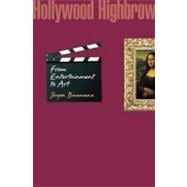
Note: Supplemental materials are not guaranteed with Rental or Used book purchases.
Purchase Benefits
What is included with this book?
| List of Figures | p. ix |
| List of Tables | p. xi |
| Acknowledgments | p. xiii |
| Introduction: Drawing the Boundaries of Art | p. 1 |
| The Central Argument | p. 3 |
| How Do We Know What Art Is? | p. 4 |
| American Film History | p. 7 |
| The Social Construction of Art | p. 12 |
| The Creation of Artistic Status: Opportunity, Institutions, and Ideology | p. 14 |
| Outline of the Chapters | p. 18 |
| The Changing Opportunity Space | |
| Developments in the Wider Social Context | p. 21 |
| The First World War and Urban-American Life | |
| Two Disparate Influences on Film Attendance in Europe and the United States | p. 23 |
| Post-World War II Changes in the Size and Composition of American Film Audiences | p. 32 |
| Summary | p. 51 |
| Change from Within | |
| New Production and Consumption Practices | p. 53 |
| Film Festivals | p. 54 |
| Self-Promotion of Directors | p. 59 |
| Ties to Academia | p. 66 |
| United States, England, Germany, Italy, and France: Changes in the Industrial and Social History of Film | p. 76 |
| Purification through Venue: From Nickelodeons to Art Houses | p. 88 |
| Prestige Productions | p. 92 |
| The Ebb of Censorship and the Coming of Art | p. 97 |
| The Crisis of the 1960s Forced Hollywood down New Paths | p. 105 |
| Summary | p. 108 |
| The Intellectualization of Film | p. 111 |
| Early U.S. Film Discourse | p. 113 |
| The Intellectualization of Film Reviews: 1925-1985 | p. 117 |
| Film Reviews Approach Book Reviews: A Comparison with Literature | p. 133 |
| 1960s Advertisements Incorporate Film Review | p. 137 |
| Foreign Film: A Pathway to High Art for Hollywood | p. 148 |
| Cultural Hierarchy, the Relevance of Critics, and the Status of Film as Art | p. 155 |
| Summary | p. 159 |
| Mechanisms for Cultural Valuation | p. 161 |
| Why a Middlebrow Art? | p. 163 |
| Film Consumption as Cultural Capital | p. 169 |
| An Emphasis on Intellectualizing Discourse | p. 171 |
| Integration of Factors | p. 173 |
| The Study of Cultural Hierarchy | p. 174 |
| Notes | p. 179 |
| References | p. 203 |
| Index | p. 217 |
| Table of Contents provided by Publisher. All Rights Reserved. |
The New copy of this book will include any supplemental materials advertised. Please check the title of the book to determine if it should include any access cards, study guides, lab manuals, CDs, etc.
The Used, Rental and eBook copies of this book are not guaranteed to include any supplemental materials. Typically, only the book itself is included. This is true even if the title states it includes any access cards, study guides, lab manuals, CDs, etc.